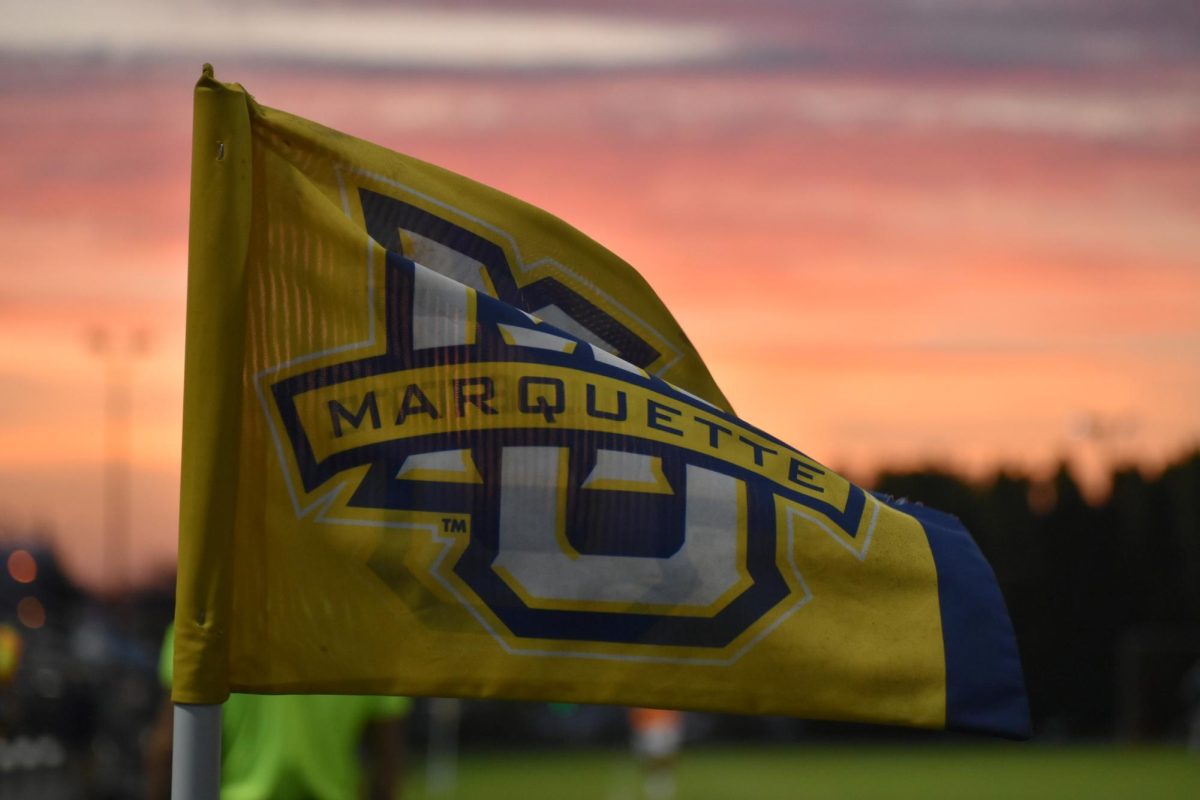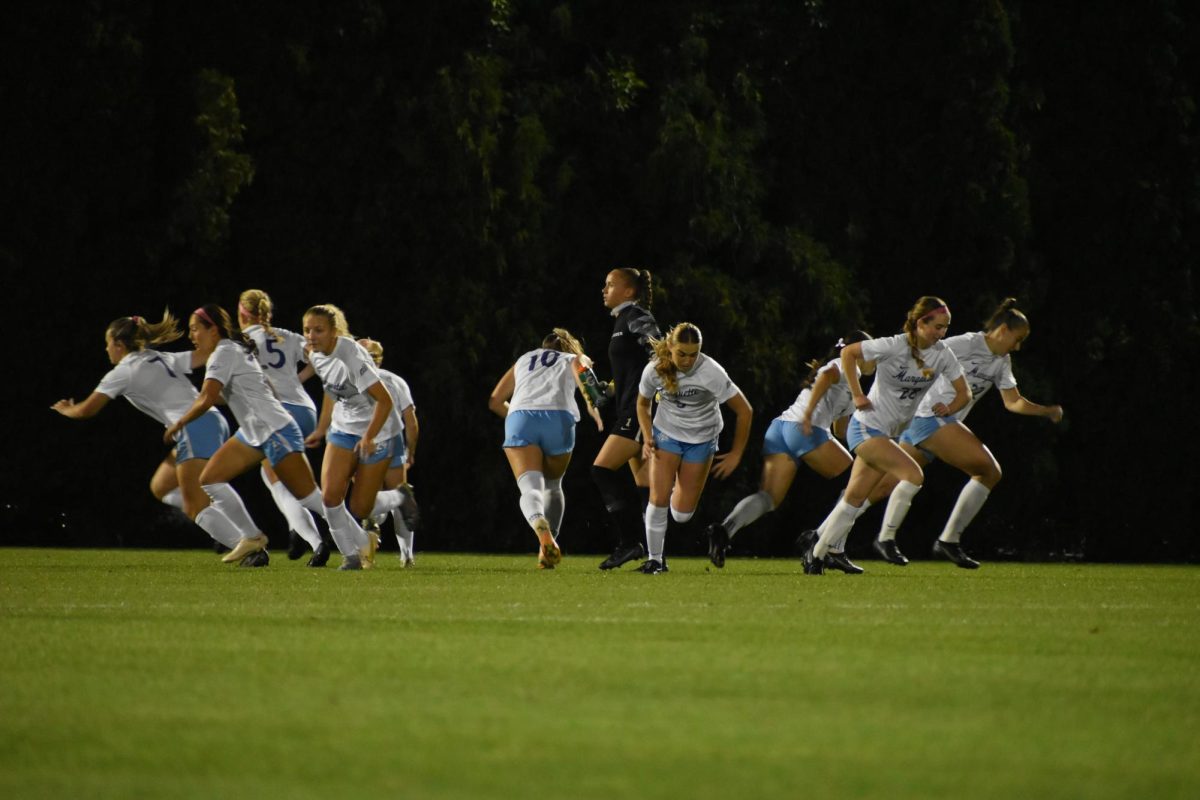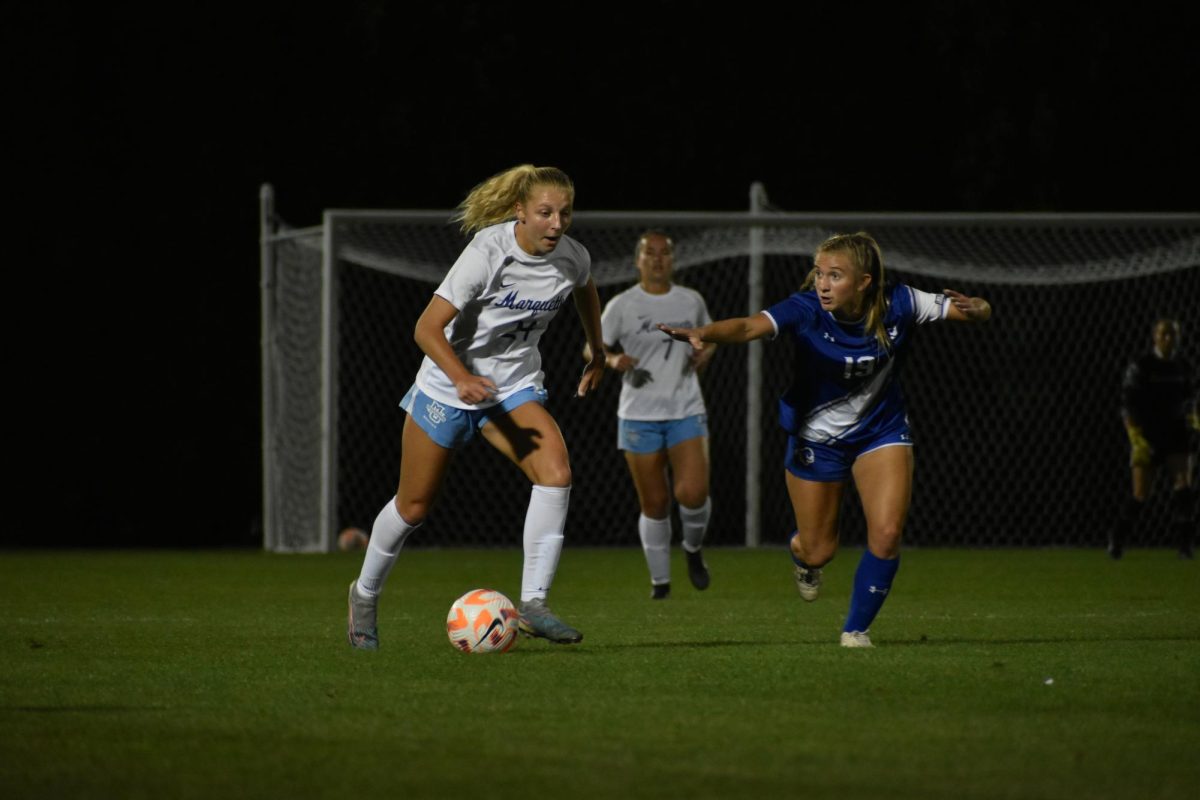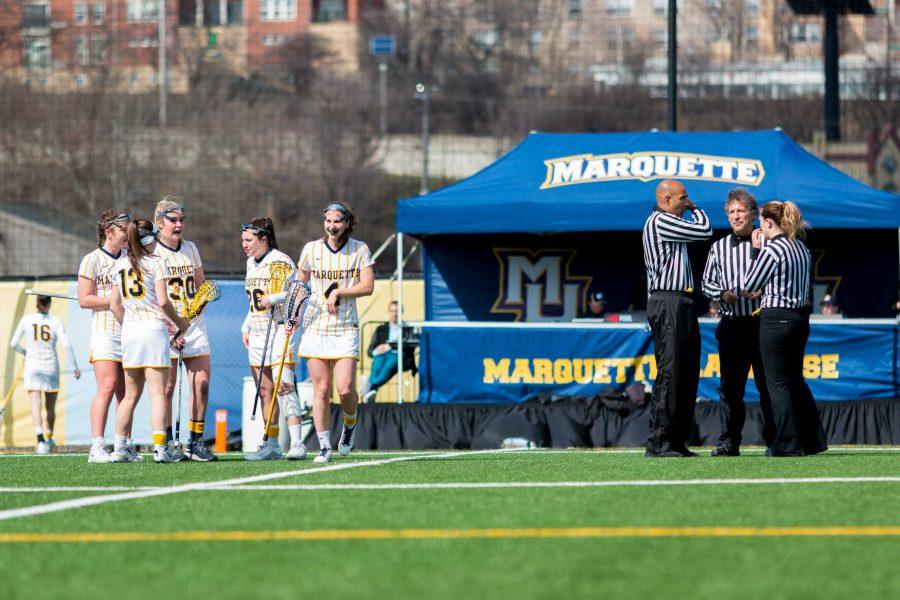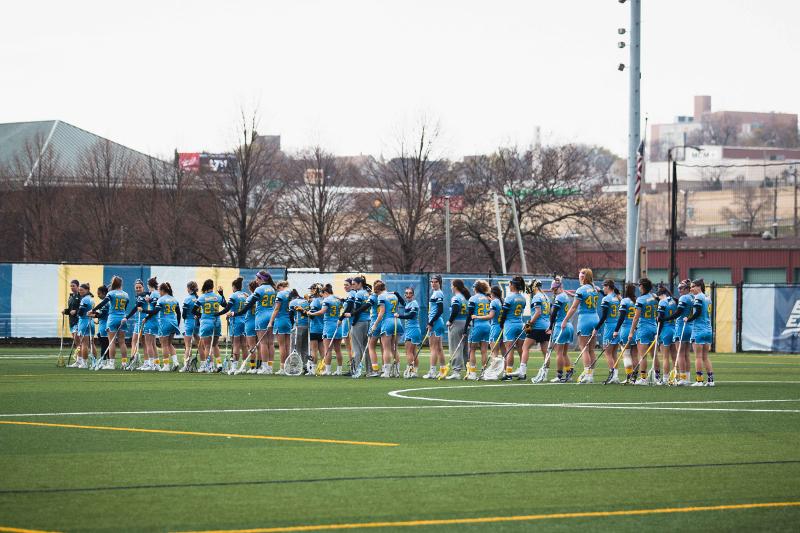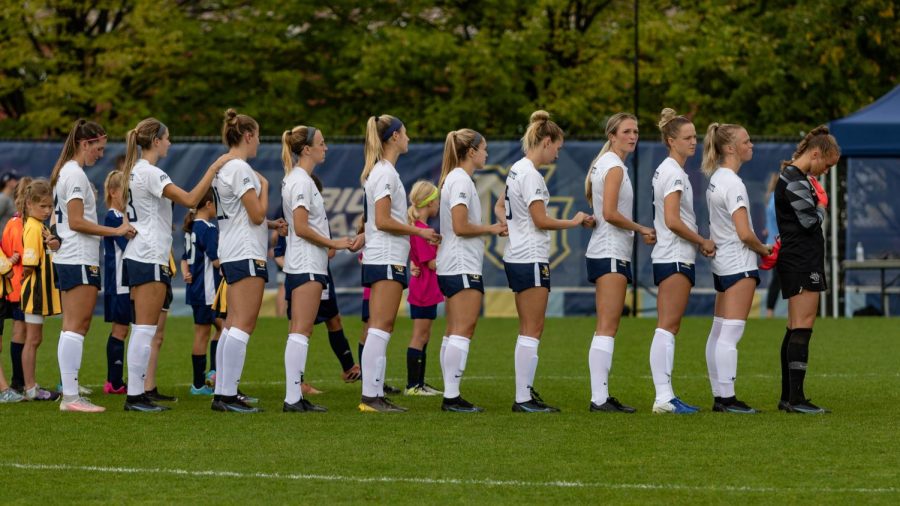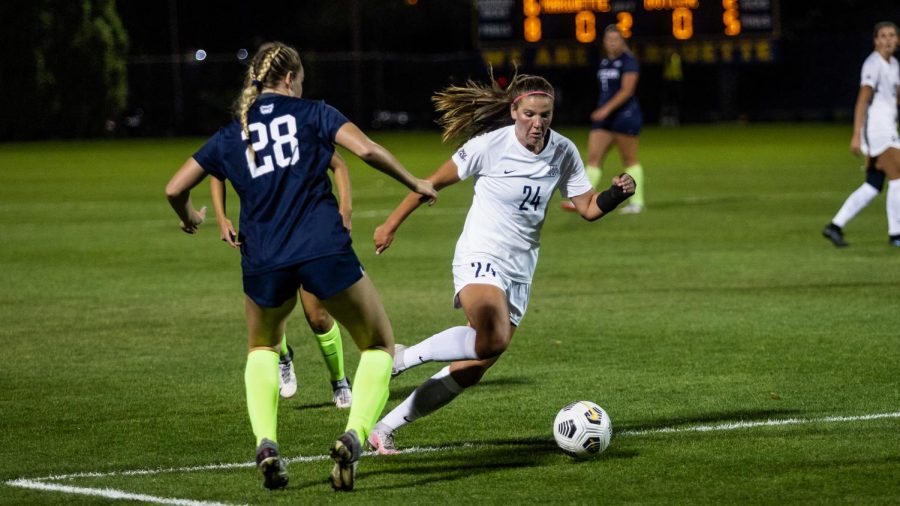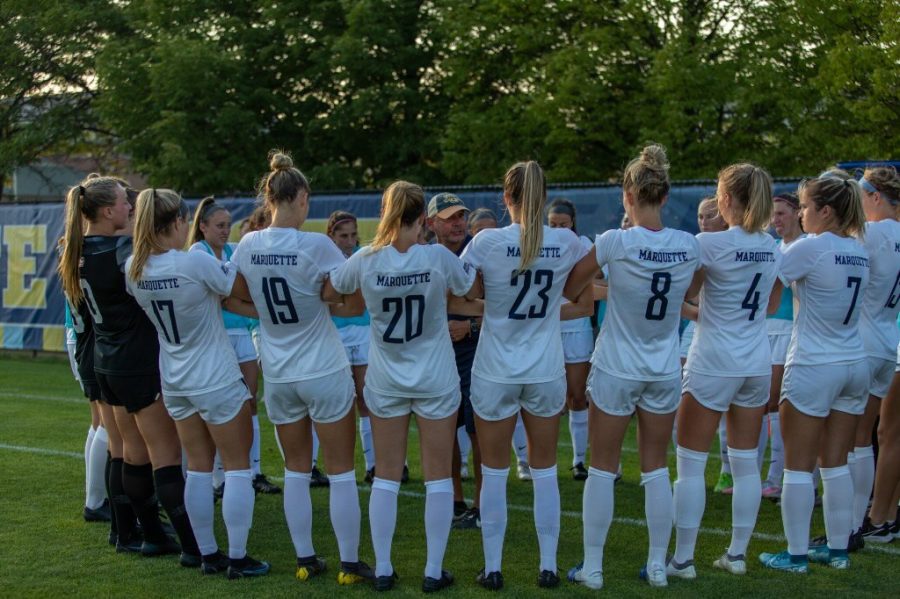Since 2017, Marquette has had the luxury of the “dome,” a giant tent-like structure located at Valley Fields. When it was constructed in 2017, the $3.6 million dollar project became essential for teams at Marquette to practice in during the winter months. Providing shelter from the wind, snow and other cold winter conditions, the dome remains a haven for Marquette’s collegiate, club and intramural teams alike.
For Marquette women’s soccer, the season usually ends sometime before the cold fully arrives, but this season has forced them to adapt.
The team has played their first two games inside the bubble and has continued to practice there. With temperatures constantly below freezing and an abundant amount of snow, many teams would likely experience much more difficulty with their games and practices without some type of indoor facility.
Head coach Frank Pelaez said the opportunity to not have to bear Wisconsin’s winter is one of the pros of the dome.
“We’re down there probably at 6:45 in the morning and it’s a good 50-degree difference in temperature and I get excited,” Pelaez said. “I think it rubs off on the team because I remember being outside in this crap and it’s not easy.”
For junior midfielder/forward Meredith McGuire, the ability to stay out of the elements is something that is unique for Marquette.
“In most cases, schools are not able to have the opportunity and it’s very limited,” McGuire said. “So even if we’re able to have the five games before the season actually starts, it’s kind of cool to be able to help a team out that doesn’t have that option to get a game in.”
For some teams that Marquette has faced like Chicago State or Illinois State, Marquette’s indoor facilities have been able to provide games on their record where they might not have been able to play.
Senior midfielder/forward Elaina Eckert said their opportunity to compete and practice indoors is not taken lightly.
“We feel very blessed to have the dome because a lot of schools don’t have that space to train,” Eckert said. “We have a full field; We’re able to play 11 vs. 11 whenever we want. We can train, we can get after it and you can get into game shape and a lot of other schools don’t really have that opportunity.”
With practices and home games taking place indoors, the only negative to the dome would be how it affects the team at away games. Pelaez said he does not really think it will affect his squad come time for BIG EAST games.
“In March, when BIG EAST play is and all the other teams will be outside, they all have turf. It’ll be cold, I expect to be outside,” Pelaez said. “If we’re going to play DePaul outside in March, then we’re going to have a couple of practices outside. If we have to shovel, we will,” Pelaez said.
McGuire also said the lack of training outdoors might have some effect on the squad, but their ability to prepare and compete on a full field was still an advantage.
“I would think it affects us to a certain effect but at the same time, in the end, we have so much game readiness and by being able to scrimmage, doing different tactics and skills throughout practice, I feel like we’ll have an advantage no matter where we go,” McGuire said.
Before Eckert’s and McGuire’s time at Marquette, Pelaez said during the spring semester, training was a little harder to come by and they had to be creative.
“I remember shoveling snow off the field with the team so we can get in a spring scrimmage,” Pelaez said. “In the past, we would be in a gym or we would be in a basketball court, which we will make the best out of, but what we have now is really special.”
McGuire said that while she was not around at the time when the team practiced indoors, she certainly heard from teammates who experienced it.
“The seniors and even the juniors at that time were saying how their winters were at old gym and how they have specific, individual sessions, all that stuff,” McGuire said. “I remember (the dome) being a big factor because this was a new resource our university has and it was a huge change. It clearly has been over the past few years.”
Pelaez mentioned how the university was able to handle the scheduling, which was especially difficult because of all the sports that need to practice and play throughout each season.
“If it’s scheduling conflicts, I think our facilities people — Greg (Smith) and Aaron Baker in particular — they’ve done such a great job of trying to be flexible with everyone knowing that all sports are going to be in there,” Pelaez said. “During practices and games, the coaching staffs have all been very good about communicating and knowing that we have to get in there.”
The unique opportunity to practice indoors on campus also presents some other benefits that may not be taken into consideration as well. Pelaez said having the dome so close helps the team academically.
“I know it helps academically for the student-athlete. We’re travelling 10 minutes to get down there by vans at most and then we’re there for an hour and a half and we’re back in a span of two hours,” Pelaez said. “If we were having to travel to practice, you’re looking at probably three hours in total. So you’re taking away from the student-athlete in their academic pursuits. I think, to me, that’s one of the biggest draws to it.”
This story was written by Bryan Geenen. He can be reached at bryan.geenen@marquette.edu or on Twitter @BryanGeenen.



